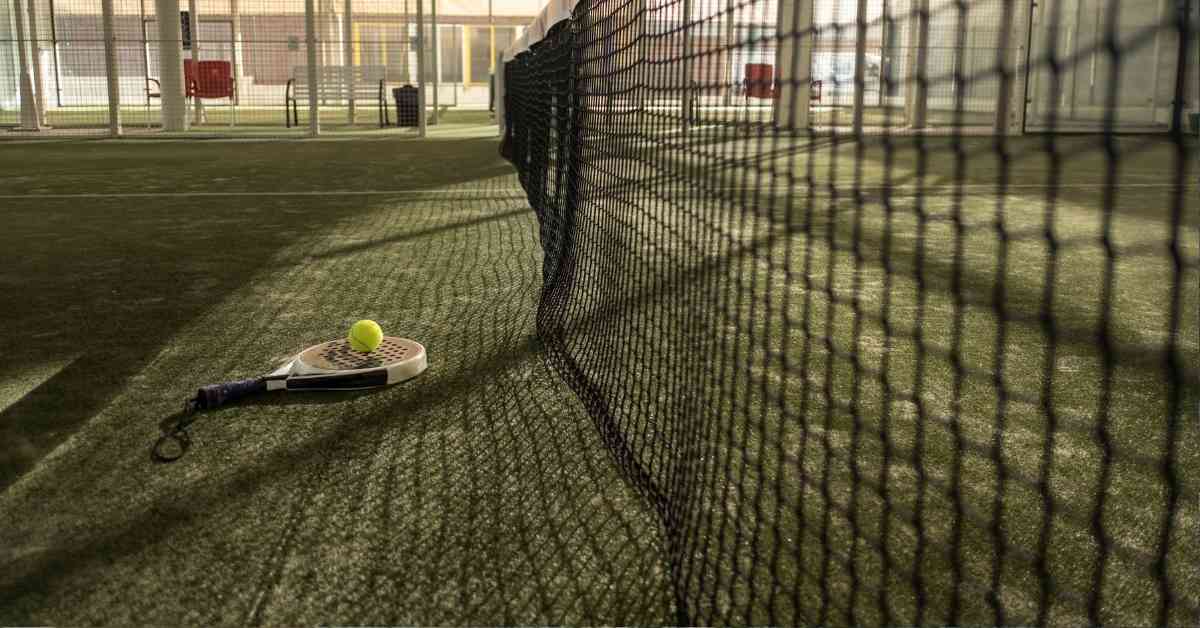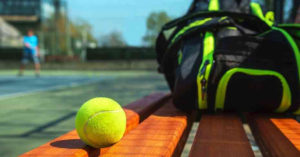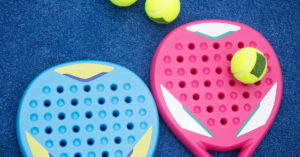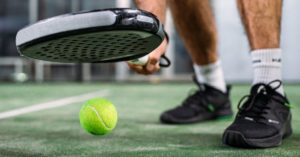When was padel invented?
Besides being a popular racquet sport of this era, Padel is also among the world’s fastest-growing sports and well on its way to becoming the most popular sport of the next 100 years.
All over the world, padel clubs are created and courts are being built at a rapid pace to welcome more than 10 million padel players worldwide
Padel is a fairly young sport, the first court was built in the 1960s but since its inception, the game quickly spread across the globe to the United States, Europe, Asia, and more predominantly throughout Latin America.
Padel was invented in 1962 in Acapulco, Mexico. The inventor, Enrique Corcuera, accidentally built the first court next to his house. This court later became the basis for the padel game as we know it today.
Since then, gradually expanded its reach. The reason behind the game’s unprecedented popularity is due to the clever combination of the best aspects of several racket sports and by taking technological improvements to its advantage.
Played in an enclosed area, about a third the size of a traditional tennis court, the sport is mostly played 2 vs 2. The court is surrounded by fences and glass walls this ensures the balls rarely go out of play. Consequently, this leads to longer and more exciting rallies.
In this article, we’ll take you through the history of Padel. We’ll cover everything about its origin, its inventor, how it started, its future, and more. So, keep reading and learn more about the world’s fastest-growing sport.
Table of Contents
Who invented Padel?
The man behind the world’s fastest-growing sport was a wealthy businessman by the name of Enrique Corcuera. He invented the game on his property in Acapulco, Mexico, where he set up the very first padel court.
Enrique altered the tennis rules, racquet, and court dimensions to invent the new sport in his search for a family-oriented and less strenuous racquet game.
How did Padel come to be?
Padel is a sport in itself today and can be easily recognized by the glass walls, the fencing, and the unique rackets.
There are many valid stories about the creation of Padel and looking back we can easily see that the sport draws its inspiration upon other popular sports of that time.
Pelota
On story is that Enrique had a piece of leftover land beside his house. This parcel had the size of 20 by 10 meters, about the size of a third of a tennis court. On one side of the court, a tall was already created, also called a “Fronton”.
A fronton is a tall wall that is used to play “Pelota”. Pelota is a sport that is played by throwing a ball on one wall, your advisory has to catch the ball and throw it back, comparable to squash for example.
Because the ball kept rolling down the field and ended up with the neighbors while playing, he had the same wall built on the other side shortly afterward.
He also built two lower walls on the sides to keep the weeds out of the court.
This resulted in the creation of a small field, surrounded by concrete walls similar to a modern padel court.
This could explain why the court is surrounded by concrete walls but still begs the question; how did Enrique come up with the idea of putting a net across the court?
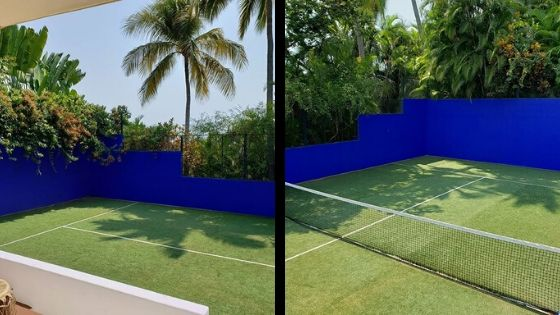
Tennis
Another story we hear frequently is that the house in Mexico didn’t have enough space for Enrique to set up a tennis court. For this reason, he created a court that was similar to the official tennis court.
Corcuera built a court that was about 10 x 20 m in dimension and surrounded by walls about the height of 3 to 4m. He also added a net in the middle to divide the arena equally.
The real reason why Enrique put up the walls was to prevent the balls from bouncing into his neighbor’s home. It was annoying for the players to constantly head over to the neighbor’s house to get the errant balls.
While playing the game, they realized that the game was more fun to let the ball bounce off the wall and keep playing. And this became the origin of this sport.
This could explain why the court is surrounded by concrete walls, why a net was spanned across the court, and why Padel is played with such different equipment. For this, we have to look at another sport, quite popular at that time.
Paddle Tennis
In addition, it is striking that the sport that was devised by Enrique was very similar to another sport.
“Paddle tennis” (or “pop tennis” as it has been called since 2015), dates back to the early 1900s, way before the birth of padel.
Paddle Tennis, invented by Frank Peer Beal, was a scaled-down version of tennis. Same field but smaller, same rules and comparable balls. A big difference was that the walls played a major role in the game.
Paddle tennis was played with a wooden racket, also called “paddle”.
Padel and Paddle Tennis both still exist today. Although they are very similar, the differences are greater.
Enrique Corcuera himself admits that he had also played paddle tennis before the creation of the sport.
This explains why Padel is played with such different kinds of rackets than other similar sports.
Paddle Corcuera
All these influences have been decisive in the creation of Padel as a sport.
The smaller court and the concrete walls that could be used have made Padel a new kind of sport, moving away from tennis and even paddle tennis.
The first version of the track was very simple: concrete walls and chicken wire and people played with flat wooden rackets.
Because the sport was a variant of paddle tennis, Enrique gave it its name: it was called Paddle Corcuera for a long time before it was named Padel.
But why is padel called “padel” and not “Paddle Corcuera” today? This has to do with how the sport spread after its conception in Mexico.

First steps outside Mexico
If you would look at a map of where Padel is played the most it is most definitely South America as well as Spain and this is not by accident. Both parts of the world played an enormous role in the broadcast of this fantastic sport.
Spain first
Prince Alfonso of Hohenlohe-Langenburg was a good friend of Enrique Corcuera. In 1974, Alfonso visited Mexico, where he played the game for the first time with his friend. It was then that he instantly fell in love with the new sport.
Besides being a Prince, Alfonso was also a renowned businessman and owned several establishments in Spain. He decided to introduce the game to his home country and quickly created the first padel arenas outside of Mexico at the historic Marbella club in Spain.
Alfonso also made some changes to Enrique’s original designs to make the sport more competitive. By adding adjustments such as extra fencing, Alfonso laid the foundation for the modern sport of Padel as we know it
It’s worth noting that this would be the first of many modifications Padel will have over the next twenty years in Spain.
The introduction of Alfonso’s padel courts marked the dawn of the new sport’s popularity among many members of this club. Most of the members were all wealthy friends of Alfonso.
When Manolo Santana, ex-Wimbledon champion, and Juan Carlos, Spanish King, began promoting the game, its popularity rose immediately. Soon, several tournaments were being held along the South Spain region as more clubs began building their courts.
Within 25 years there were Padel clubs all over the Spanish landscape. Today, the Spanish Padel Federation has more than 20,000 padel courts across the country.
Rapid growth worldwide
Marbella, where the hotel of the Spanish Prince Alfonso is located, was frequented by wealthy Latin American tourists.
A year later after building the first track in Europe, in 1975, the Argentine millionaire Julio Menditeguy reacted so enthusiastically to this new sport that he decided to import the sport to his home country Argentina.
In Argentina, the sport grew rapidly and quickly became the second most popular sport in the country next to football.
Today, more than 10,000 courts exist in Argentina and the sport has spread to neighboring countries such as Brazil and Chile.
Modernizing the court’s design
Until the end of the eighties, little had changed in the aspect of the court. The game was still played within concrete walls and basic fencing. The hard and rough concrete walls were not user-friendly for when a player fell or ran into it.
Also, people from the outside could see much less of the game.
Crystal Palace on TV
In 1989 Jorge Galeotti came up with a design that made padel much more enjoyable for players and spectators worldwide, the so-called “Crystal Palace”.
The “Crystal Palace” design used glass walls instead of concrete. Glass walls are much less hard and ensured that spectators could watch from angles around the field.
Not only spectators could watch, but also cameras, so that much more padel was broadcast on the TV.
Another big plus of this new material choice is that unlike concrete, glass is much more mobile. Therefore the court could be taken apart and rebuilt elsewhere more easily.
The combination of both made padel tournaments much more accessible
Professionalization of “Padel”
Due to the lack of official rules, there were differences from country to country. In particular, between Spain and Argentina. For example, there were many differences in what an official court should look like or what the rules were regarding the service.
In 1991, representatives of the Spanish, Argentine and Uruguayan padel associations gathered in Madrid and the Federación Internacional de Pádel (FIP) was formed. From 1991 the padel federation managed the sport and all the rules surrounding the game.
From this moment on, the word “PADEL” was used. This stood for “Promoción de Actividades Deportivas, Educativas y Lúdicas”.
This means, roughly translated “Promotion of Sports, Educational and Leisure Activities”.
In addition, Padel sounded “Spanish compared to the English “paddle”. This has been instrumental in how the name of the sport came about and how Padel has evolved.
This was a pivotal moment in the history of the sport as the federation helped to equalize the game.
Padel in numbers today
Globally
The game has grown speedily in recent years, and today, over 8 million people worldwide play Padel. However, statistically speaking, this figure still makes it a comparatively small sport. This is especially true when you compare it to the world’s biggest sport, which is football. As per FIFA data, there are about 265 million football players, which is four percent of the world’s population.
At present, Argentina and Spain take the lead in the number of padel courts and players. In Argentina, there are over 2 million padel players and over 10,000 courts. As for Spain, there are over twenty thousand padel courts and approximately 6 million active players.
Spain also takes the top spot in the world when it comes to the growth of Padel economically. Considering these figures, it’s no wonder why it’s one of Spain’s most popular sports. As far as popularity is concerned in Spain, Padel overtook tennis, and now it’s increasing its global reach.
Besides these two countries, this racquet sport is also growing in different markets worldwide, and it’s happening fast. The sport has reached approximately 57 countries globally, particularly in places with solid tennis traditions. Countries where Padel has grown significantly in recent years, include Sweden, Portugal, Italy, and France.
It’s difficult to assess the exact number of padel payers across the globe. However, the global sales of padel racquets are an excellent indicator of growth. It’s worth pointing out that 83,000 padel racquets got sold in 2002, and in 2017, the figure rose to 409,000. Ever since 2010, the sport has been thriving and growing consistently. Now, it’s considered by many as the world’s fastest-growing sport.
Padel in Asia
More and more sports enthusiasts are starting to know about the padel world daily. Today, the sport is also spreading rapidly throughout Asia. Let’s take a detailed look at how the padel sport is growing across the continent.
Padel in Japan
In Asia, it was Japan that introduced the sport by constructing the first padel platform. In 2013, a local sports club owner in Tokorozawa decided to build two padel courts. Since then, around twenty new courts got built across the country as of 2018. As of 2020, Japan has over 8000 practitioners, with 300 official Japan Padel Association (JPA) federation players.
Padel in Singapore
A year after the sport commenced in Japan, Singapore followed suit by installing padel courts at the historic Swiss Club. There isn’t much official information about the statistics or federation of the sport in the country. However, there are multiple club maps and groups on Facebook where padel enthusiasts can connect and come together to play.
Padel in China
In China, unofficial sources claim that the first court got constructed in Beijing in 2016. At present, there are eight padel courts in Beijing, and many more are in development. In 2019, China also established the Padel Tour to make the sport more popular throughout the country.
Padel in Thailand
Phuket and Bangkok are the two primary Padel centers in Thailand, with about 400 padel players and 11 courts as of 2020. Two Swede enthusiasts of the sport built three courts in Phuket. In the beginning, statistics show that 99% of Padel players were only tourists. However, nowadays, 15 percent of the players are locals.
Padel in India
The IPF (Indian Padel Federation) governs the sport, and it’s committed to the promotion and growth of Padel. The sport debuted in Bengaluru in 2017. It also took four years for the officials to obtain the permissions to construct the first Padel site. There are over 20 unofficial Padel courts in Bengaluru, and the figure is higher for the entire country.
What makes padel so popular?
The main advantage is the learning curve. Padel is a very easy sport to learn. There are a few simple but specific rules but at the same time, it bears a lot of resemblance to tennis. Players with a background in another racket sport pick up padel quickly.
Even if you are not technically very strong yet, an experienced player has less advantage over you than with any other racket sport.
On the tennis court, an experienced tennis player will have an advantage over a less experienced tennis player. Tennis is much more about strength. Without enough experience, one would quickly fall behind
In padel, levels equalize faster. This is because the game is more strategic. You can easily use the glass wall at the back of the field to catch a hard and fast shot. You have a better chance of getting the ball compared to Tennis as the glass wall provides you an extra opportunity.
In addition, it is less physically demanding than, for example, Squash or Tennis and less prone to injury. Many tennis veterans, therefore, turn to padel.
It is also a fun sport. The distances to your fellow players are smaller than with other sports, making it easier to communicate, even with opponents.
Conclusion
Padel was invented by the Mexican Enrique Corcuera in the early 1960s and probably came to exist by the influence of several existing racket sports at that time, a too-small field next to his house, and most of all, some luck
From Paddle tennis to Paddle Corcuera to Padel. Padel is a sport with a very rich influence. Not only from other racket sports from other countries that have contributed over the years.
This rich influence has allowed it to grow into the success it is today, accelerated by Prince Alfonso of Hohenlohe-Langenburg and the creation of the crystal palace court.
The sport is becoming more and more popular, partly because Padel equalizes playing levels and is less intensive than other racket sports. It is also an easy sport to learn.
Padel is well on its way to becoming the sport of this century.
Below is a video of Enrique Corcuera on the original padel court.

